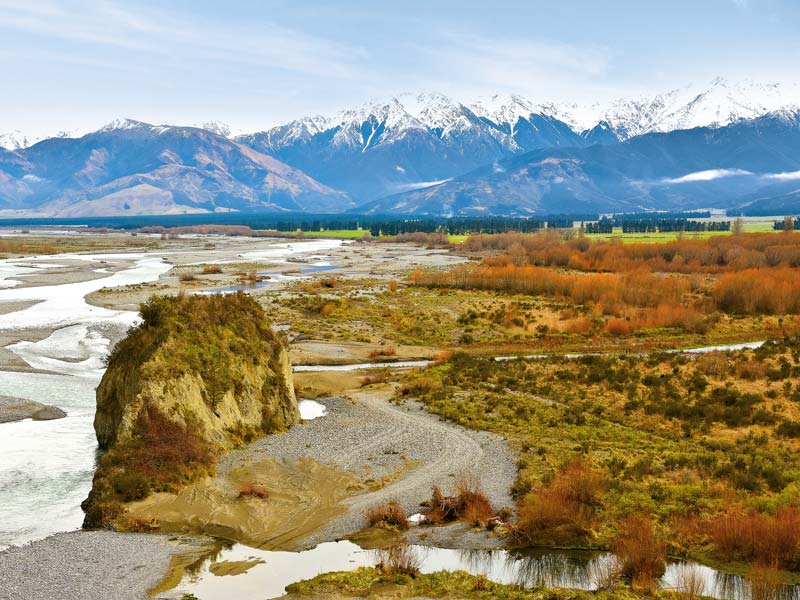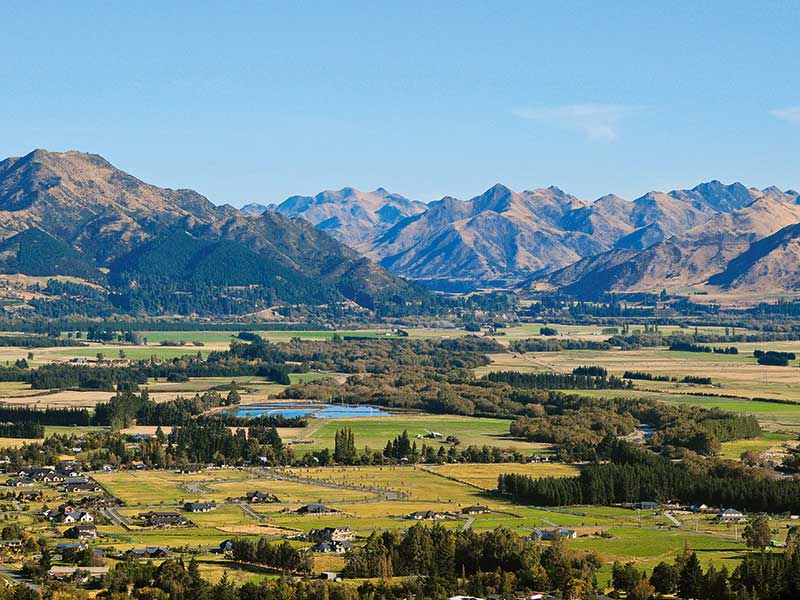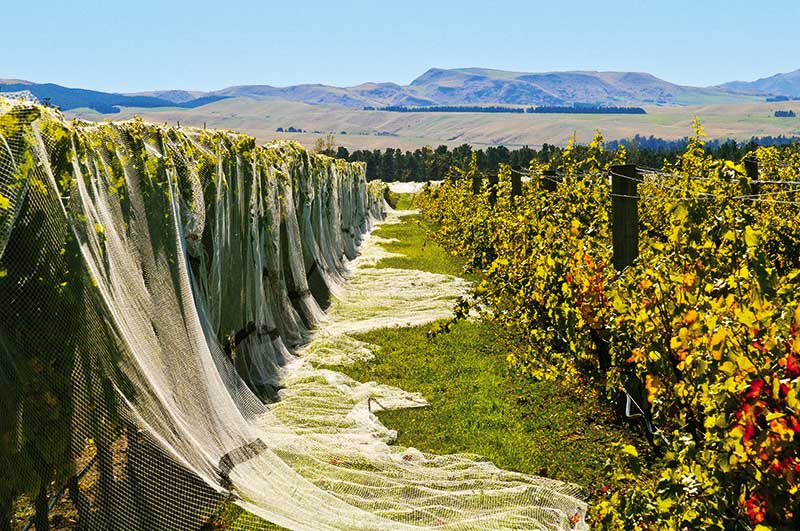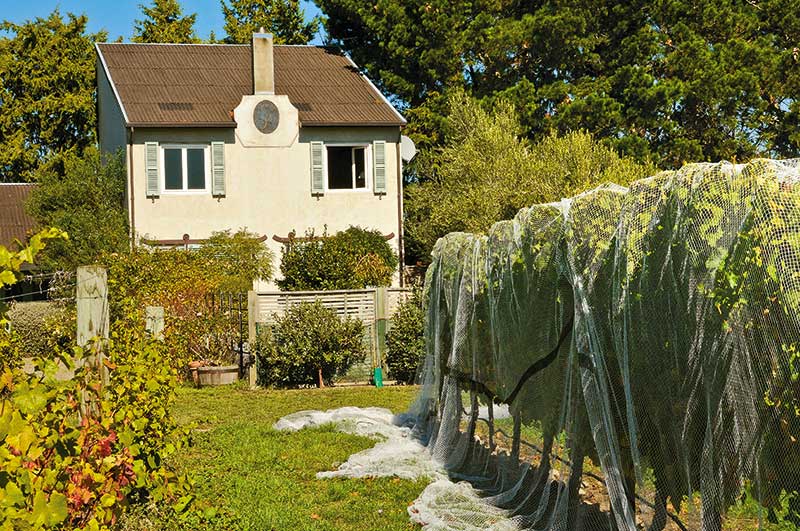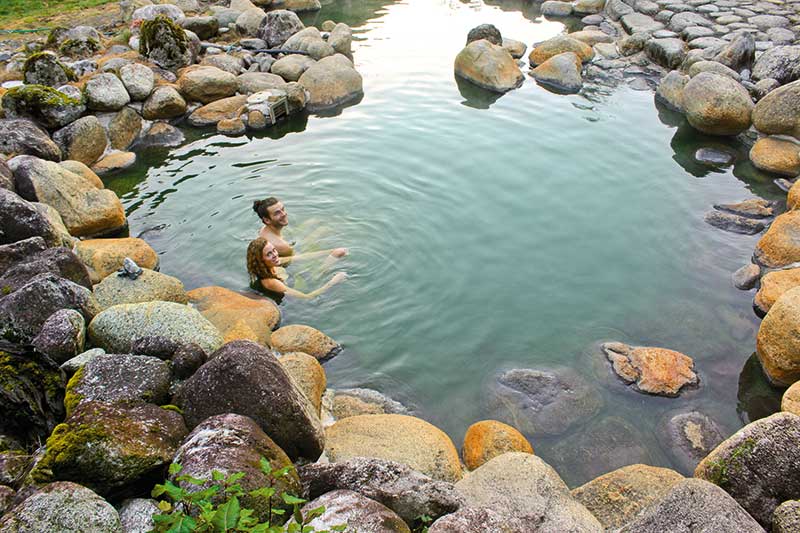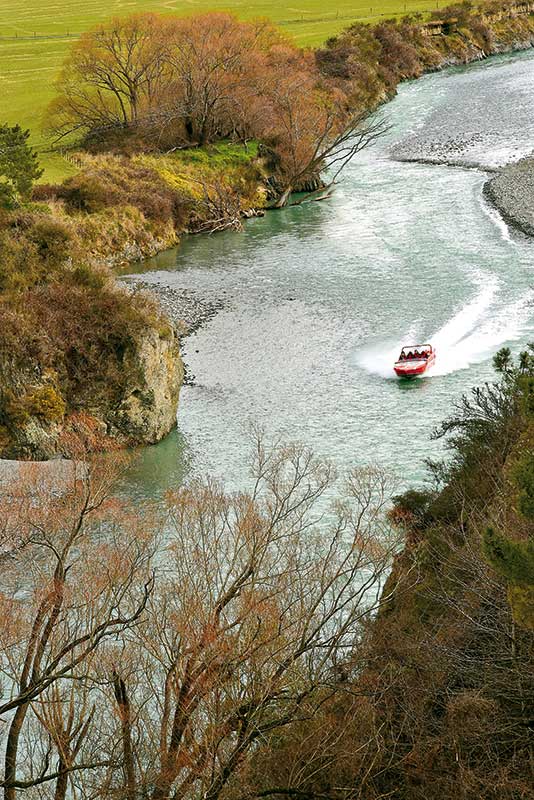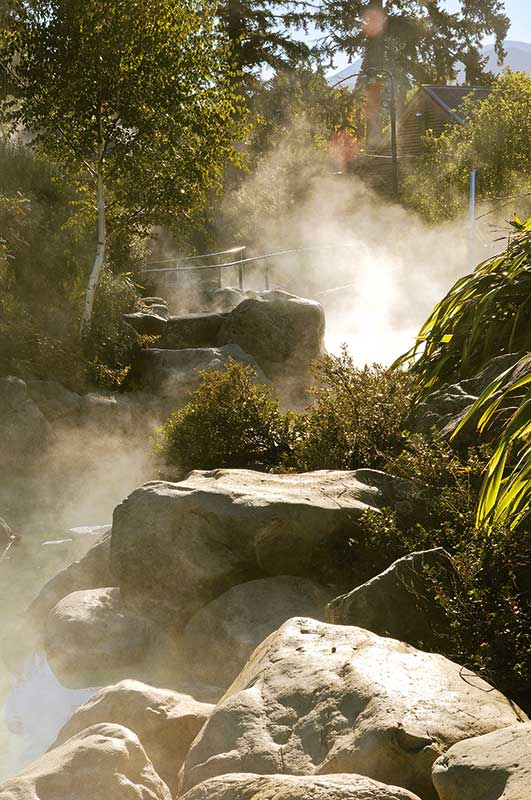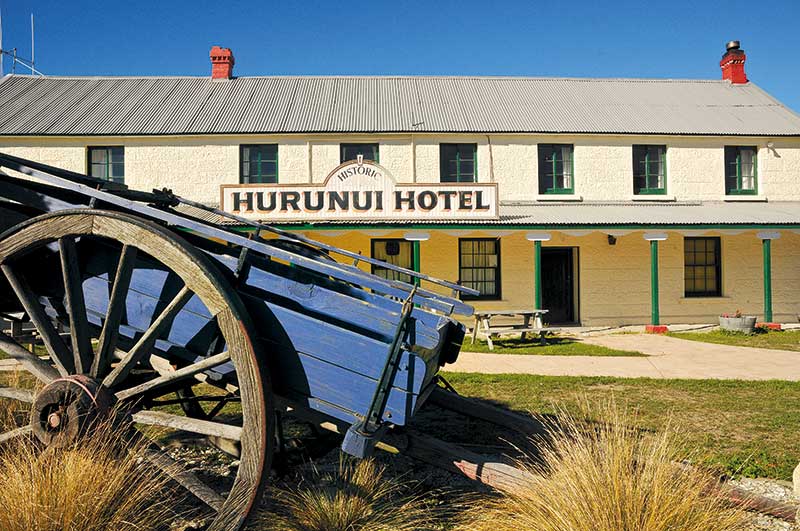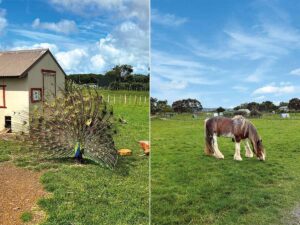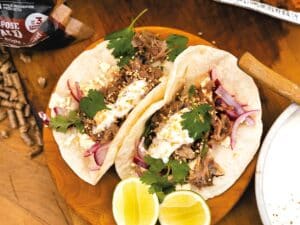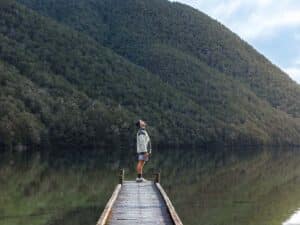“Wine is water infused with sunshine,” says an artful graffiti in the ladies loo at Pegasus Bay winery. As I sip a glass of Riesling that tastes of honeysuckle and lime in the winery’s sun-filled garden, I think that it is exactly right. Pegasus Bay, north of Christchurch, is a perfect lunch stop on our way to Hanmer Springs.
Waipara Valley has the sunny, dry autumns and stony soils that some wines love, and it is famous for spicy, rich Pinot Noirs and Rieslings and other aromatic varieties such as Pinot Gris and Gewürztraminer. There are 74 vineyards, 31 wineries, 12 cellar doors, and four winery restaurants in the area.
It seems shameful to leave the area and not try the vintage of another winery. Fiddlers Green, above the Waipara River, is our next stop. Sam is driving so he admires the rows of vines, neatly shrouded in white lacy veils that keep the birds away, while I sip Sauvignon Blanc and Pinot Gris. We wisely invest in a number of bottles of sunshine and water to be enjoyed later.
The Hurunui Hotel is so famous that we decided that we must stop there, but coffee is the beverage of prudence. However, wine, food, and warm sun is conducive to napping and there are still 50km to Hanmer Springs, so a wake-up jolt is required.
Opened in 1869, Hurunui Hotel is the oldest hotel to continuously serve liquor but its bigger claim to fame is the ghosts that reside between the walls and in the halls. The most well-known of its paranormal occupants is Charlotte, a maid who died there is mysterious circumstances in 1903. Mr and Mrs Hastie, the first publicans, are known to wander the corridors in the wee hours as is Murry, a shearer, who lived in room one for a long time.
We don’t get a glimpse of a ghost—it’s mid-afternoon—but the coffee is good and the selection of jukebox tunes is exceptional.
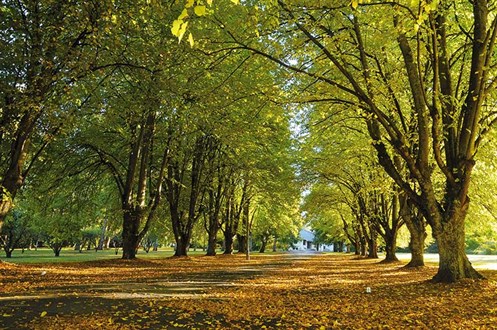
The drive to Hanmer Springs is pretty; there’s blue sky, a dusting of snow on the mountains, and golden grass on foothills. We postpone that nap and walk up to Conical Hill, Hanmer’s iconic leg-stretcher. In a 1906 photograph, Conical Hill is a bald but perfectly pointed cone with a path zigzagging up the face of it. The path is still there, providing a smooth, steady amble, though the hill is now covered with giant redwood trees.
The view from the top is magic—birch-edged rivers curl over farmland, green hedges crisscross to distant hills, and the town spreads from the bottom of the Conical Hill like a bright border around a green skirt.
Hanmer has the buzz of a resort town. People come here to have fun at the hot pools and at the nearby ski fields in winter. So there are many more cafes, bars, and outdoor clothing, souvenir, and art shops than one would expect in a town with a population of 840. We are abruptly reminded that it is school holidays when we go into the hot pool complex.
Here, hundreds of children—twice the population of town it seems—are zooming down the water slide, climbing up waterfalls, trying to sit on top of water spouts, and waiting in a huddle for a giant water bucket to tip its contents onto them. It is a big complex with 12 public thermal pools of different shapes and sizes. So many children having fun is too hectic for me, so I have a quiet, relaxing soak in a private pool and then treat myself to a massage at the Spa. Heavenly.
Morning means walking and Hanmer’s secret is the six-hectare park-like grounds of Queen Mary Hospital in the middle of the town. The hospital closed in 2003 after 106 years of service. Besides its glorious grounds, it has three historic buildings: the 1916 Soldiers’ Block, 1926 Chisholm Ward, and 1929 Nurse’s Home.
There are wide avenues of 110-year-old trees, groves of rhododendrons and azaleas, and sun-drenched lawns. Injured soldiers came here for the curative powers of the water. In 1916, there were more than 100 men, broken by war, physically or mentally, recuperating with fresh air, sunshine and hot mineral pools.
Nearby, Hanmer Forest is another perfect place to walk. In 1903, prisoners began planting trees in the Hanmer Springs basin. They planted thousands of hectares of exotic trees until the programme stopped in 1913. Now, the trees have grown and there are mature stands of cedar, redwood, cyprus, larch, pines (ponderosa, Corician and Austrian), alder, rowan, yew, and silver birch.
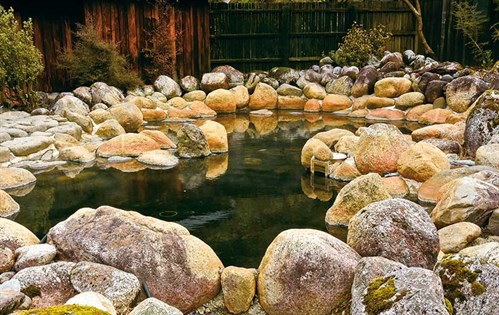
The walks are gorgeous and mostly flat, but for those who want more action, mountain biking is the way to go. Hamner Springs Adventure Centre, a 10-minute cycle from the forest, hires out mountain bikes.
There are all sorts of other adventurous things one can do: bungy jumping off the Waiau River bridge, scaring the bejesus out of oneself in a zooming jet boat, and doing dangerous things on quad bikes. But we are more the walking and hot pool bathing types.
Mauria Springs thermal pools are our next destination, but before that, there is the adventure of our first journey through Lewis Pass. At 864m, it is not the Southern Alp’s highest pass nor most dramatic, but it’s impressively surrounded by extensive virgin beech forest. The pass is named after Henry Lewis, who in 1860, together with Christopher Maling, was the first European to discover it while working as a surveyor.
Maruia Springs Thermal Resort is in the middle of Lewis Pass on the West Coast side. It is rustic in a good way with the hot pools being natural shapes surrounded by river boulders. They are on a terrace above Maruia River, and it is sublime to soak in steaming water listening to the birds and gazing over the valley to a vast, untouched landscape of forest and mountain peaks. The resort is beautiful now, though tired, but before long it will be lovely. This year it was bought by a young, enthusiastic Kiwi couple, James White and Kim Hamilton, who are supported by investors. The renovations are already underway.
Marble Hill Campsite in Lewis Pass Scenic Reserve, just 10km past Maruia on the road to the West Coast, is one of those places that reinforce the delight of having a self-contained motorhome. There are plenty of secluded places to park where the forest joins river flats. The Maruia River makes a background thrum of water rolling stones, and in the morning, birds add a tuneful combination of tweeting, chiming, and trilling. Kaka fly high and call loudly over the valley. Dawn in the wilds of Lewis Pass, in a cosy motorhome, is a primo experience.

